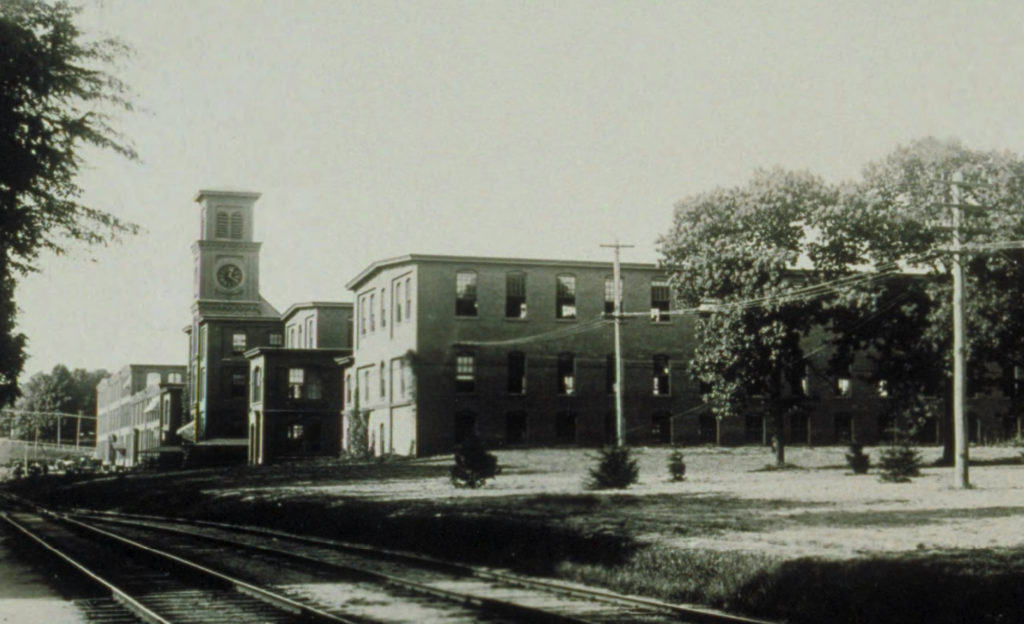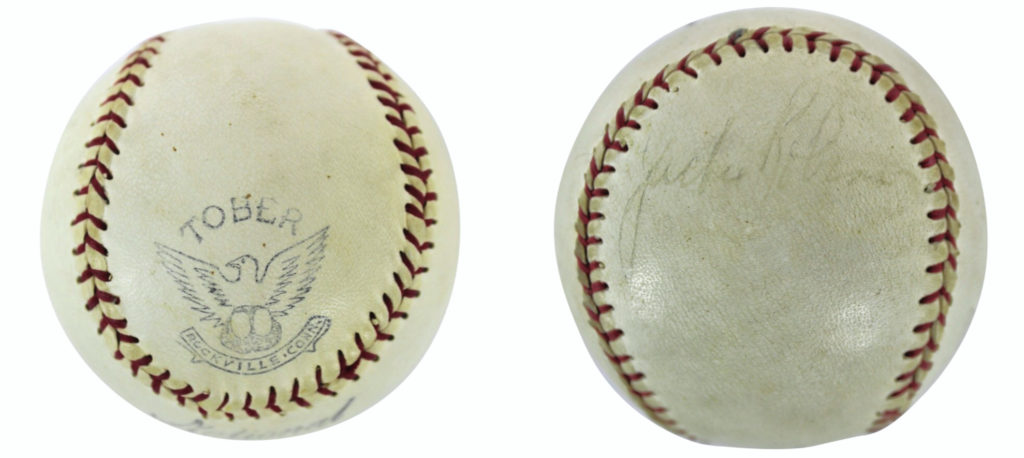Back when most manufacturing companies organized baseball clubs, one of the longest running teams in Connecticut was Royal Typewriter of Hartford. In 1908, Royal Typewriter moved operations from Brooklyn, New York, to New Park Avenue on Hartford’s western edge. Along with their crosstown competitor, Underwood Typewriter Company, Royal Typewriter’s relocation made Hartford the “Typewriter Capital of the World.” That same year, the Royal Baseball Club joined the city’s lively amateur scene. Ownership built a baseball diamond next to their facility, supplied uniforms and the Royals would become a local powerhouse for the next four decades.
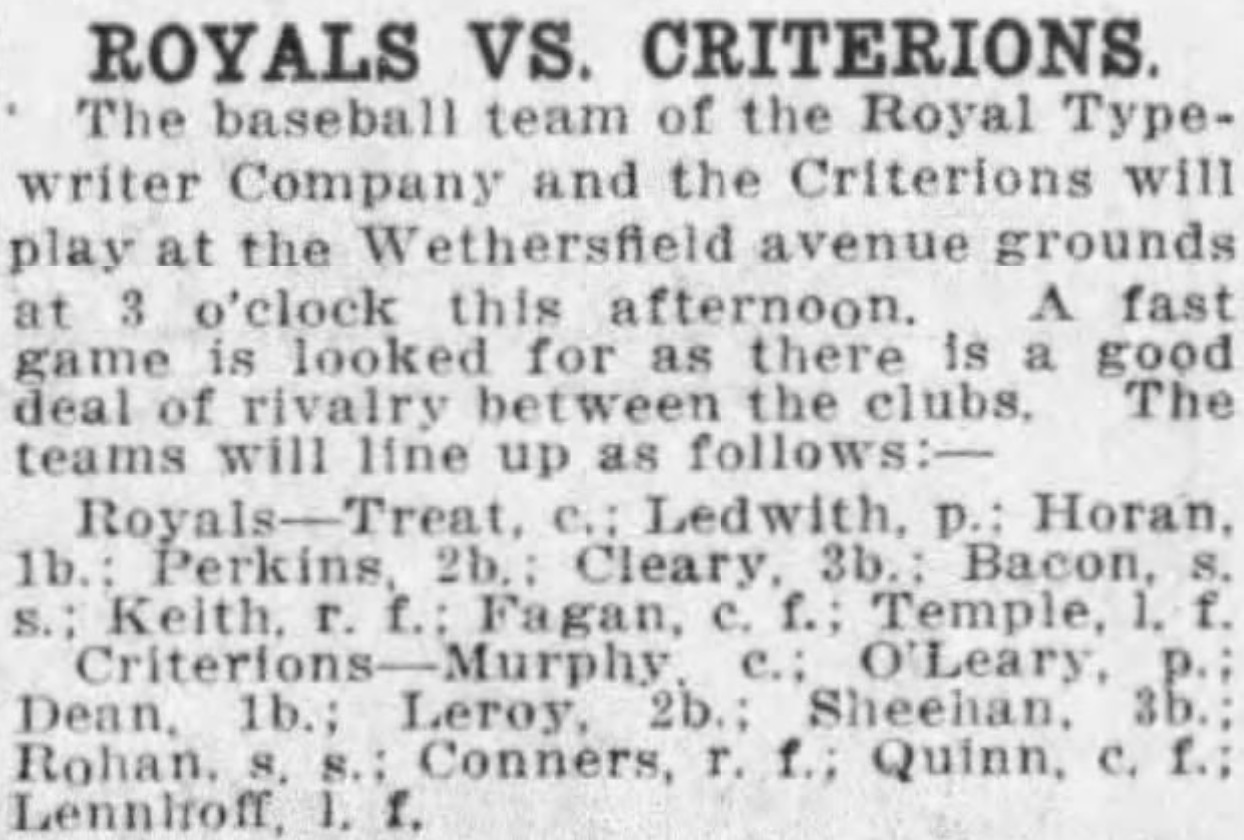
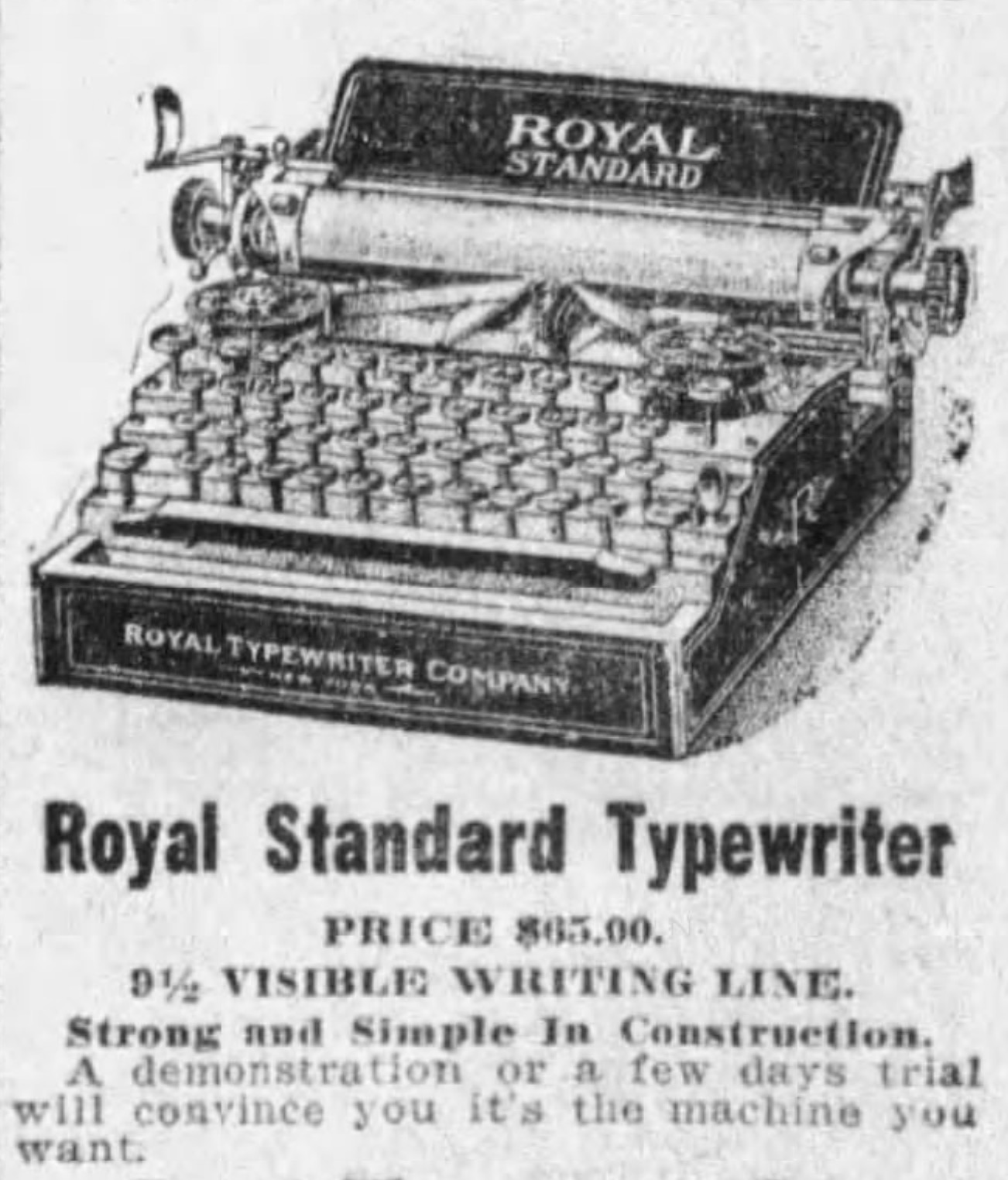


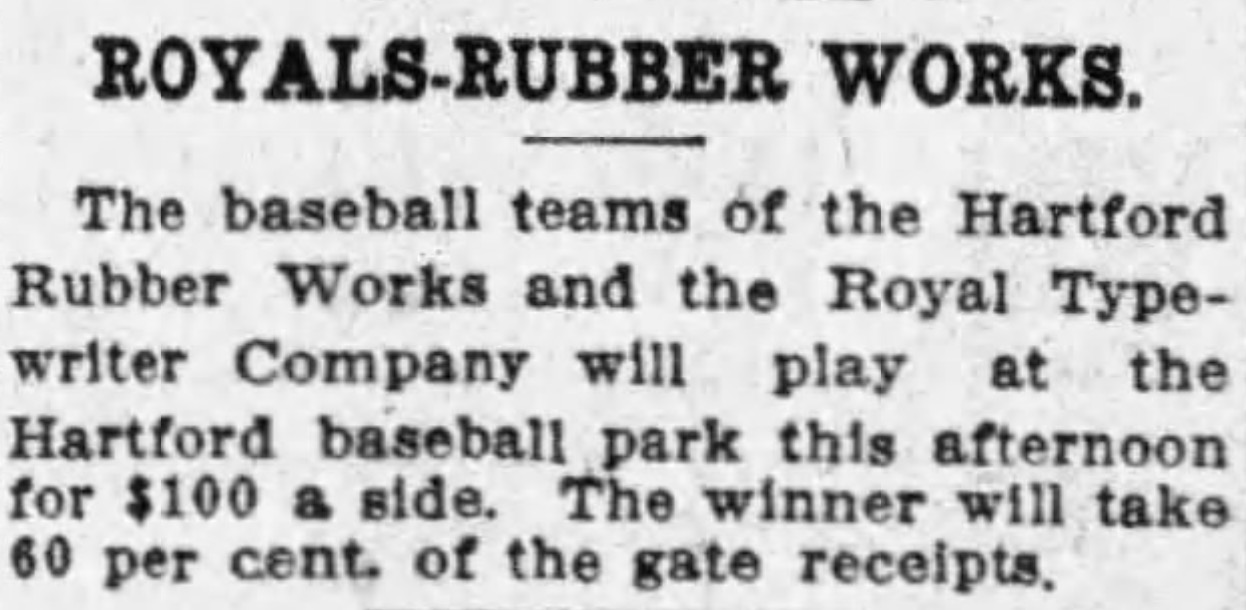
Royal Typewriter players were young working men from the factory floor. A tall, right-handed pitcher named Moses “Moe” Lenhoff from Ashley Street was the team’s ace. Lenhoff had minor league experience with New Britain of the Connecticut State League and later with Amsterdam, New York, of the Eastern Association. His Royal battery mate was John “Boggy” Muldoon of West Hartford, a catcher who later signed with the Hartford Senators of the Eastern League at 20 years old. Following a semi-pro career, in which he caught a game for Babe Ruth, Muldoon became a well-known umpire, later retiring from the factory after 42 years of service.

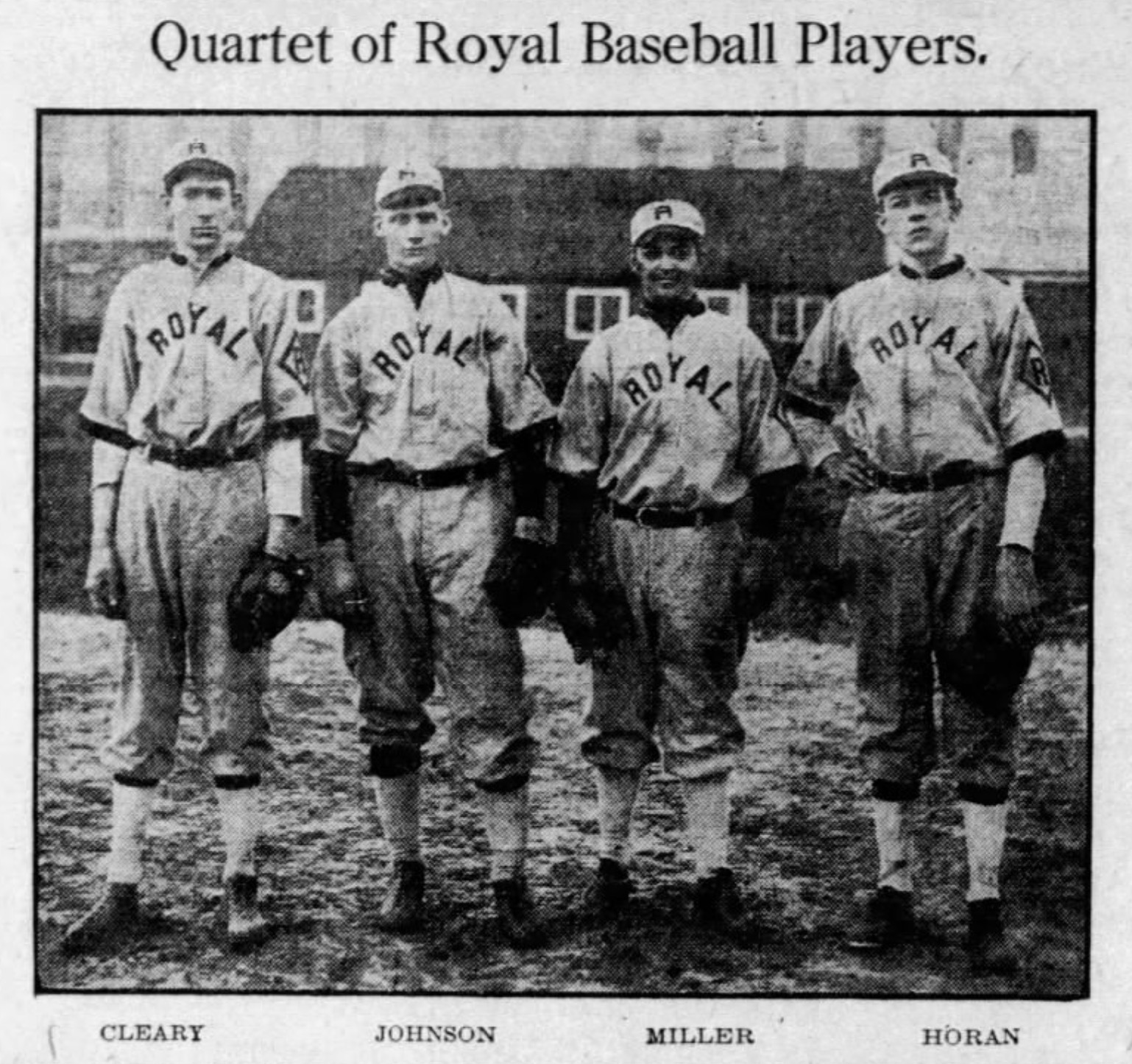
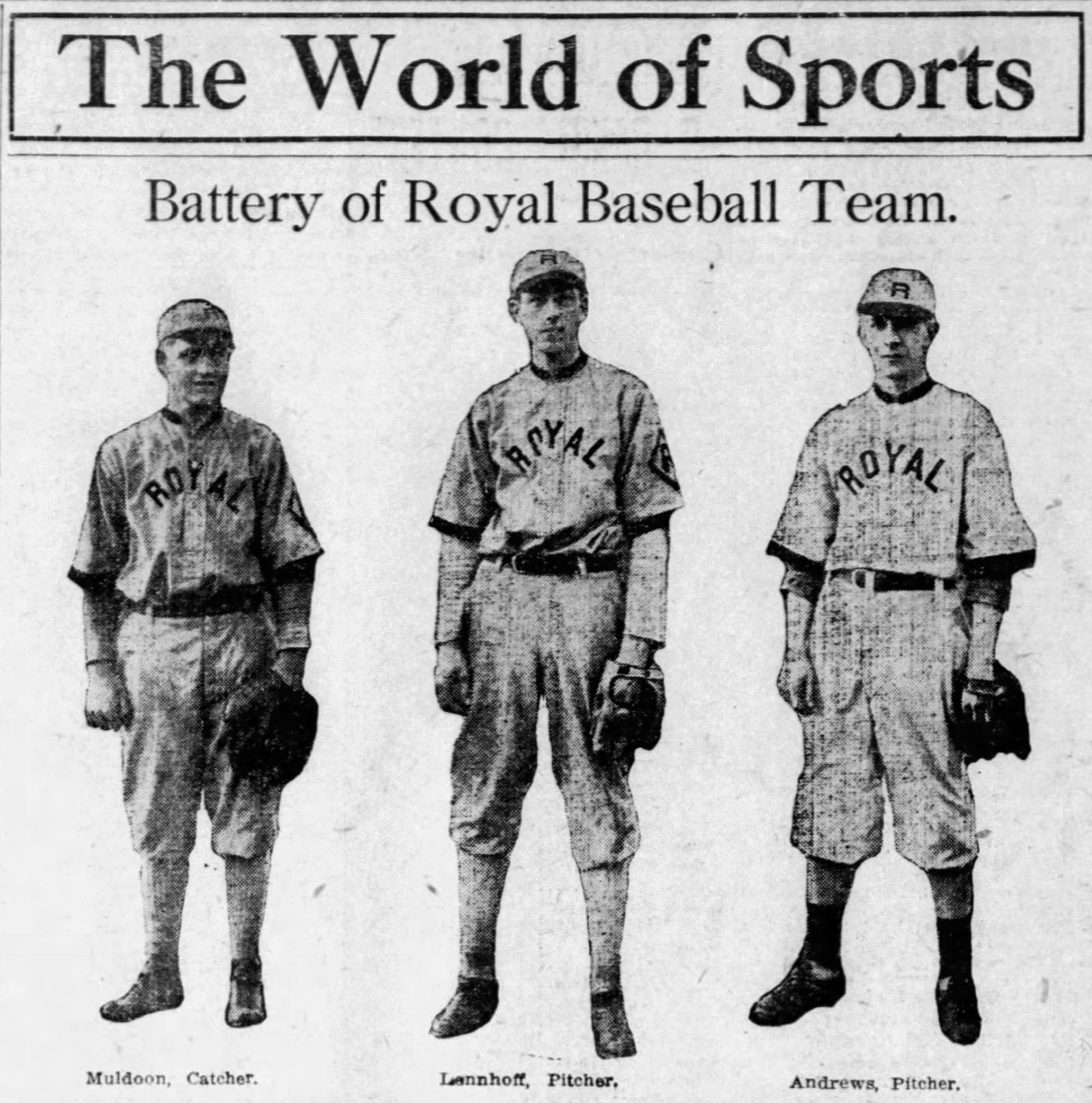
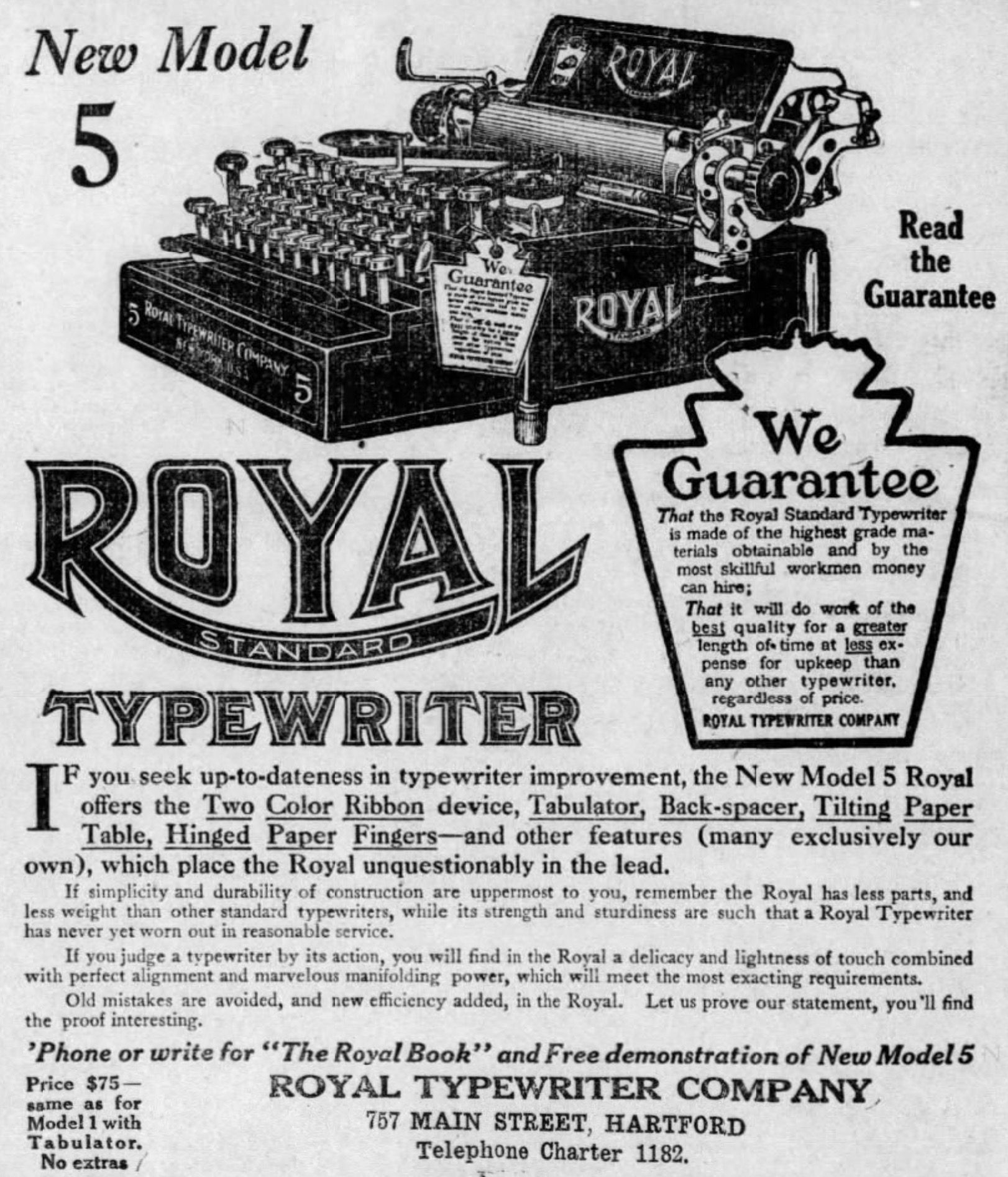
The Royal club was revered as one of Hartford’s top company teams. Their manager club was A. A. MacKay, recognized as “Father Baseball” by his players. In 1913, they were chosen to represent the city in a newly arranged Connecticut Independent Baseball League by sporting goods purveyor and community organizer, Harry N. Anderson. Other entries were Manchester, Meriden, Wallingford, Bristol, New Britain, Windsor Locks and Collinsville. For a company team, Royal Typewriter was elite, but as semi-professionals, they finished fourth place in consecutive seasons.
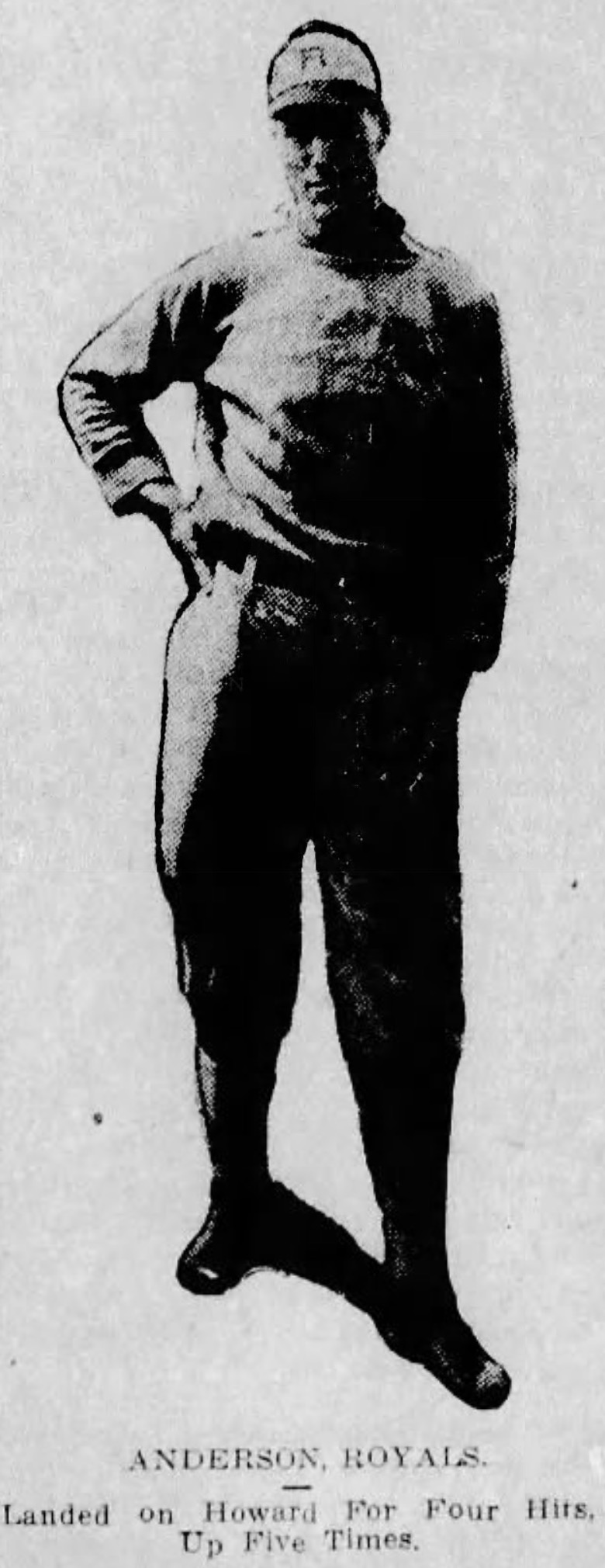
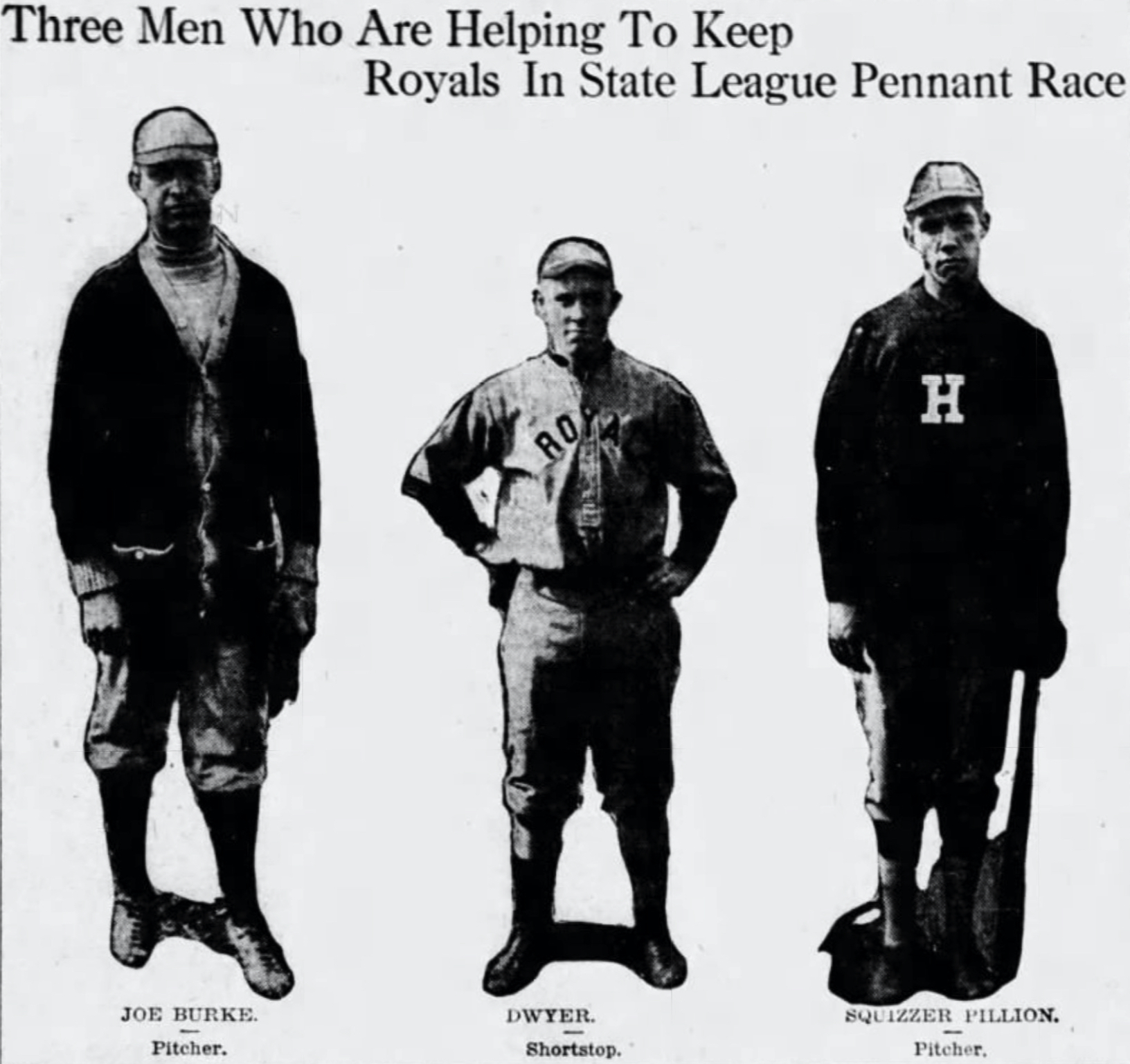
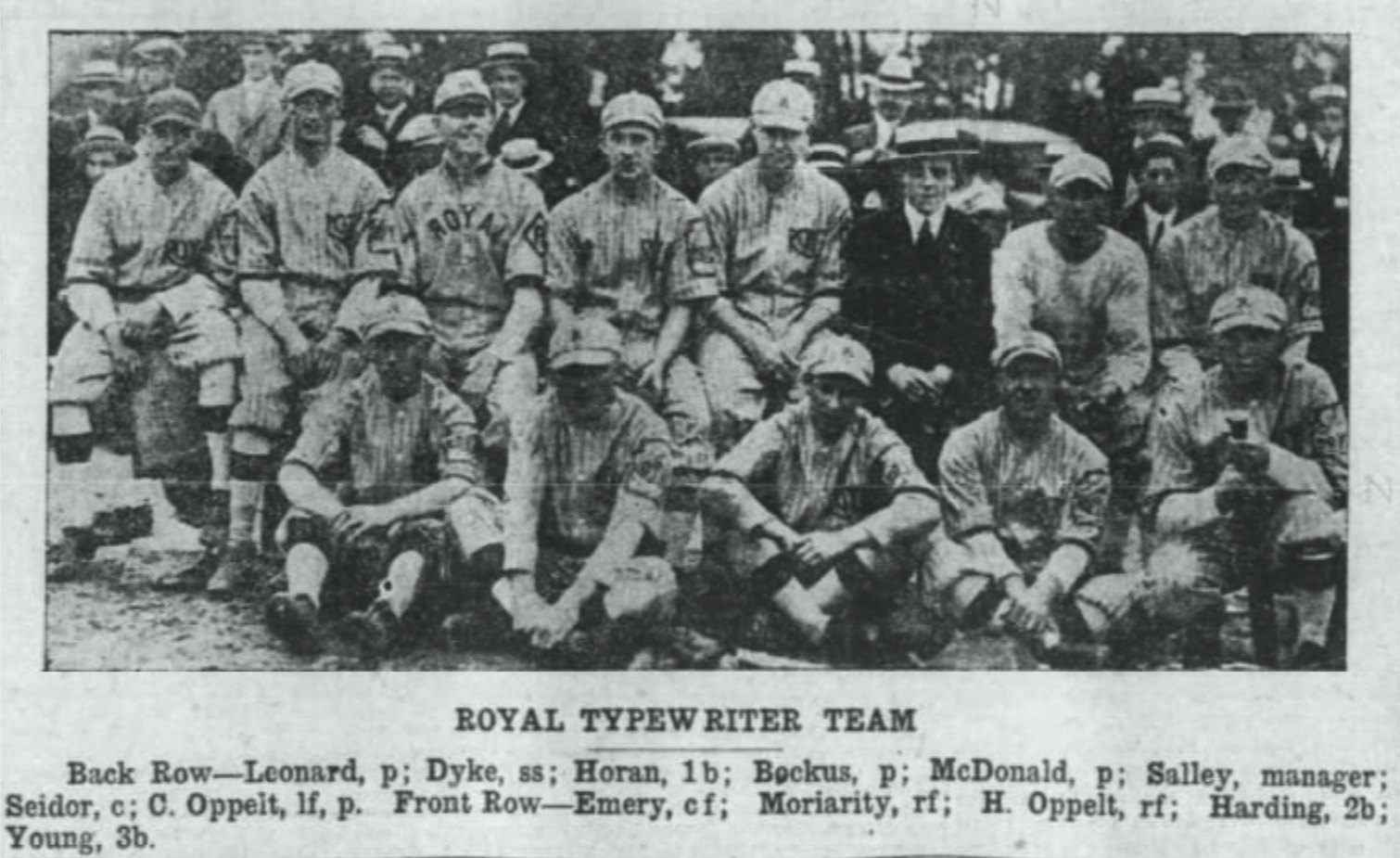
On October 9, 1926, the Hartford Daily Courant reported that Royal had made its one millionth typewriter. The thriving business also served up exciting baseball action. Thousands of fans witnessed the Royals perform after work hours. However, public interest in company teams waned during the impending Great Depression. Unemployment made sports less of a priority. Crowds of 5,000 at Royal games were now reduced to a few hundred Hartford Industrial League fans.

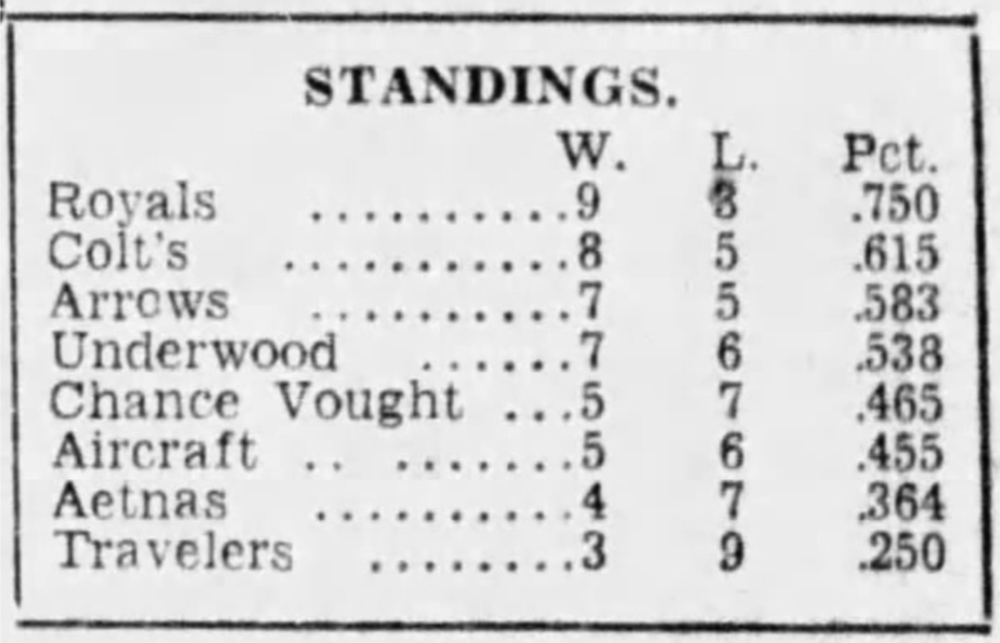

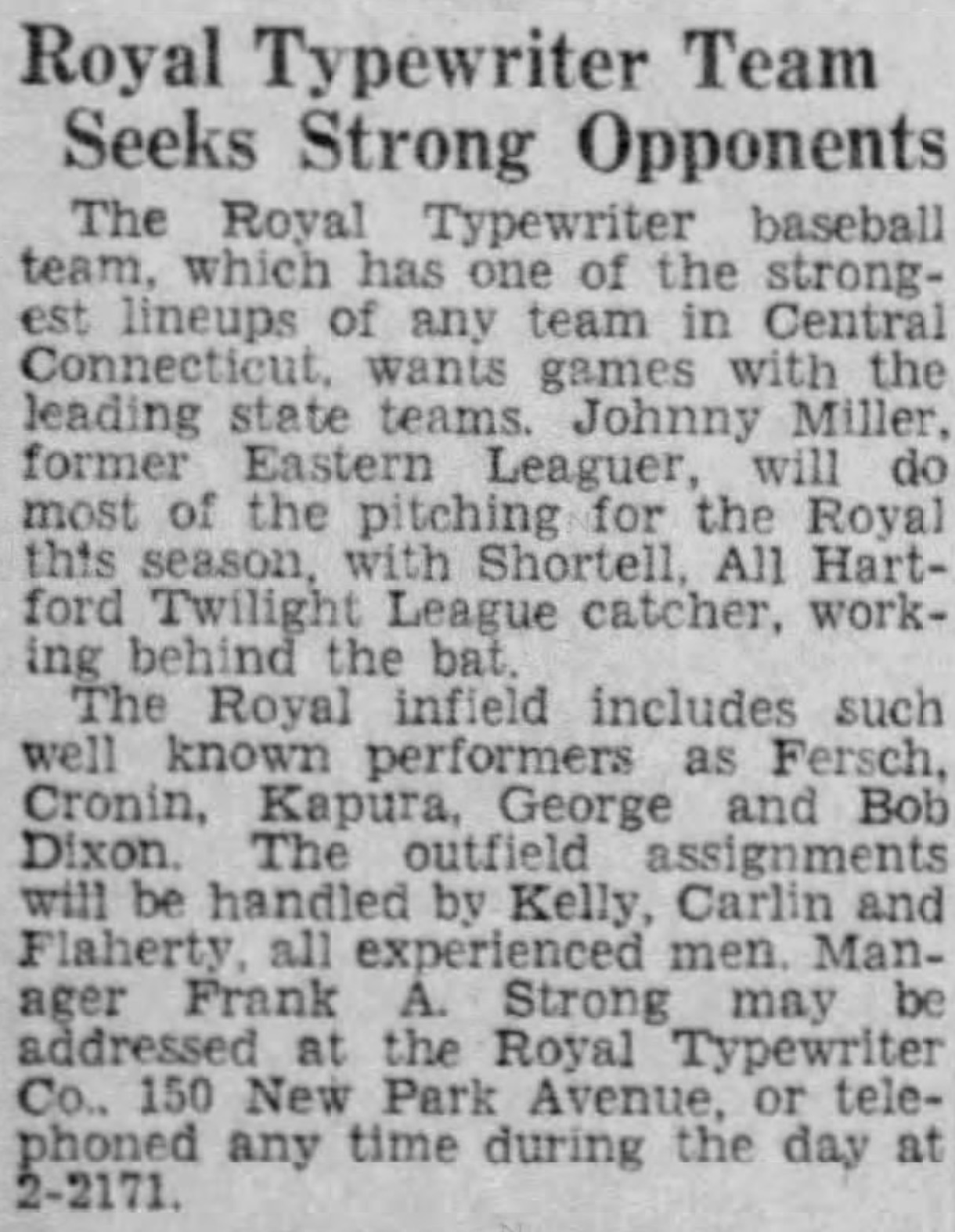
Royal Typewriter finally hit their stride as a baseball franchise in the late 1930s. Under a new manager, Frank Strong, they became runner-ups of the 1937 Industrial League. The next season, Royal defeated Chance Vought and captured the “Dusty” League title with a perfect 15-0 win-loss record. Many Royals on the 1938 championship team such as Pete Kapura, George Dixon, John Carlin, Yosh Kinel and Jackie Cronin were savvy veterans with plenty of diamond time as members of the Savitt Gems, Bill Savitt’s semi-professional club at Hartford’s Bulkeley Stadium.
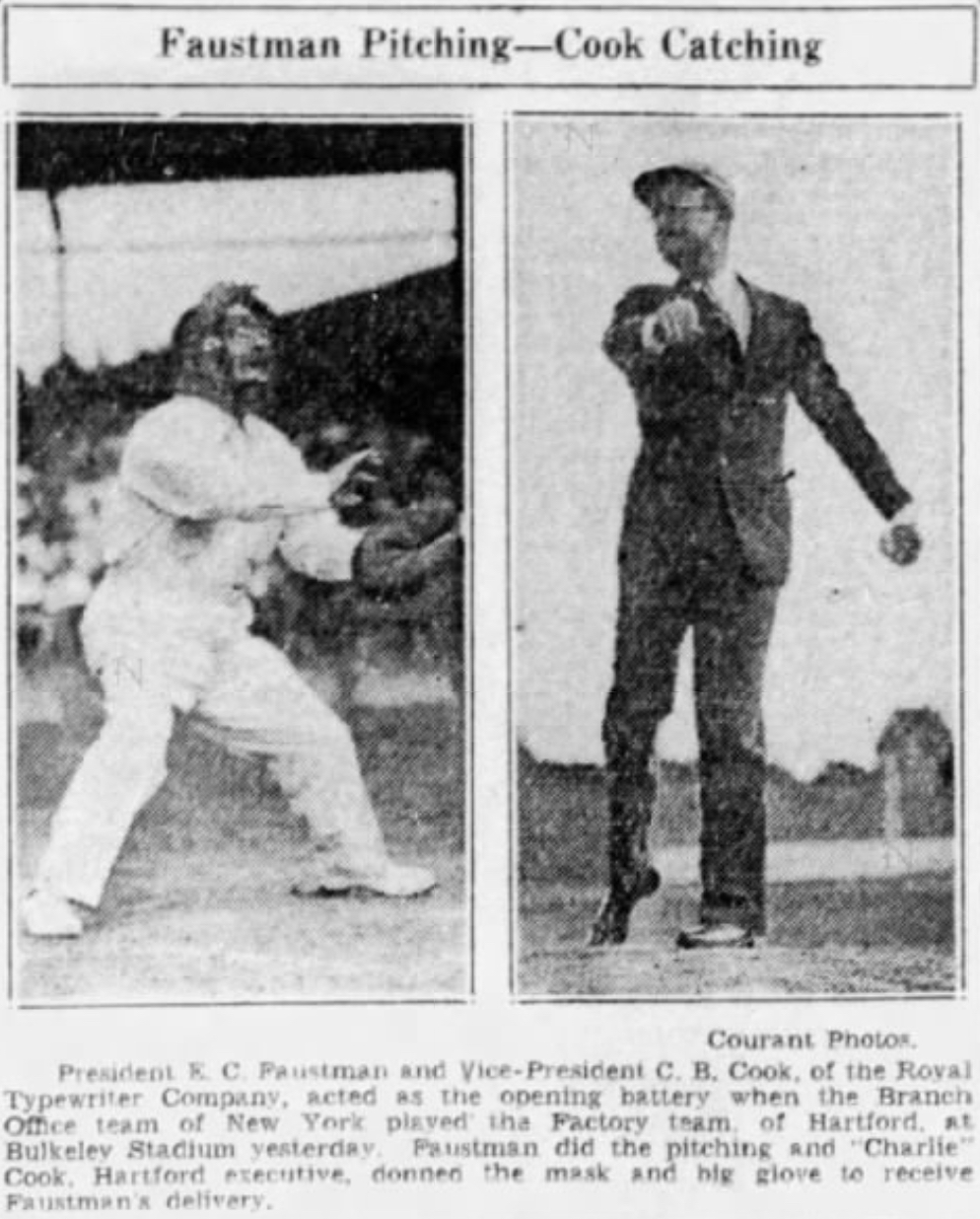
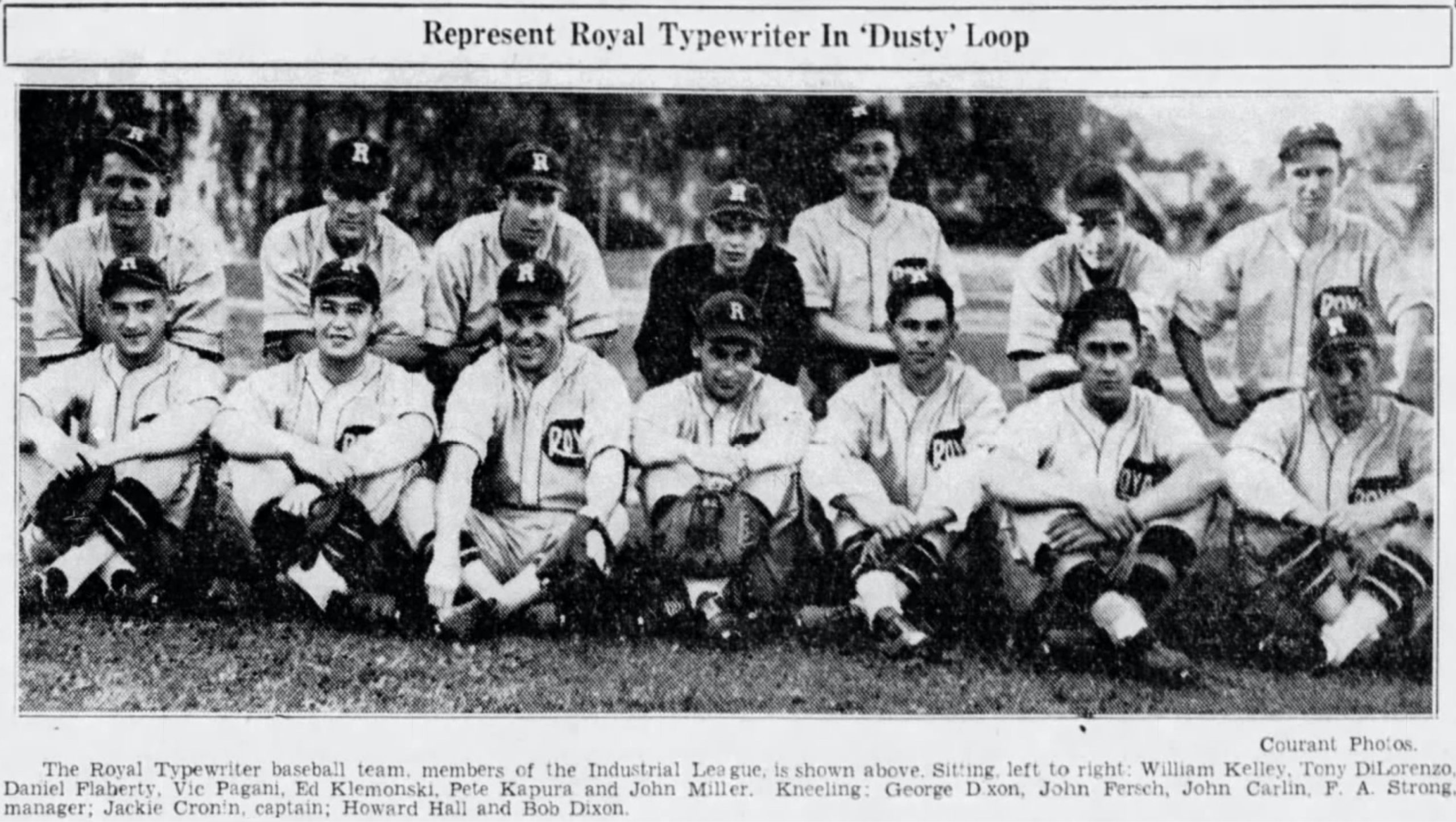
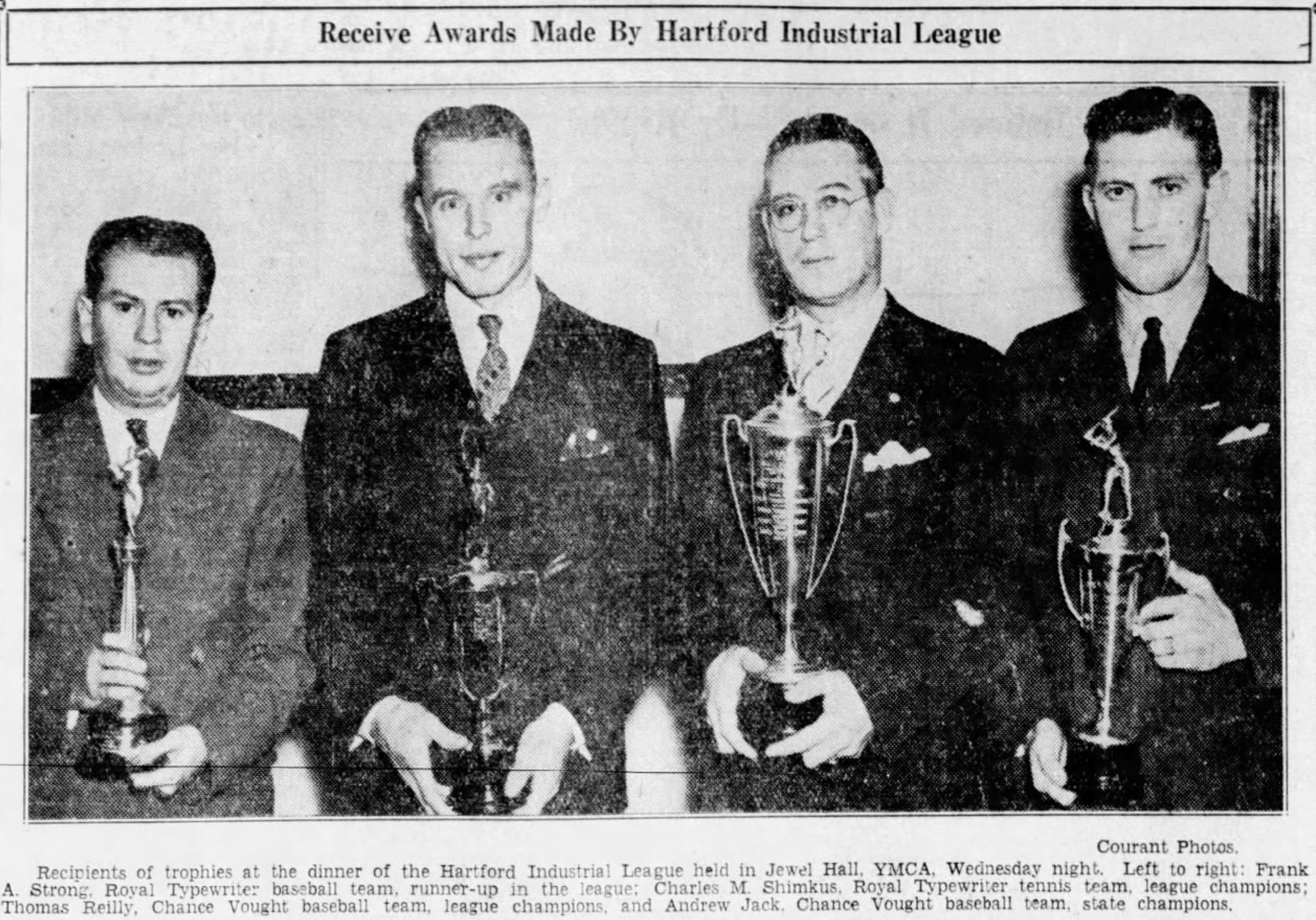
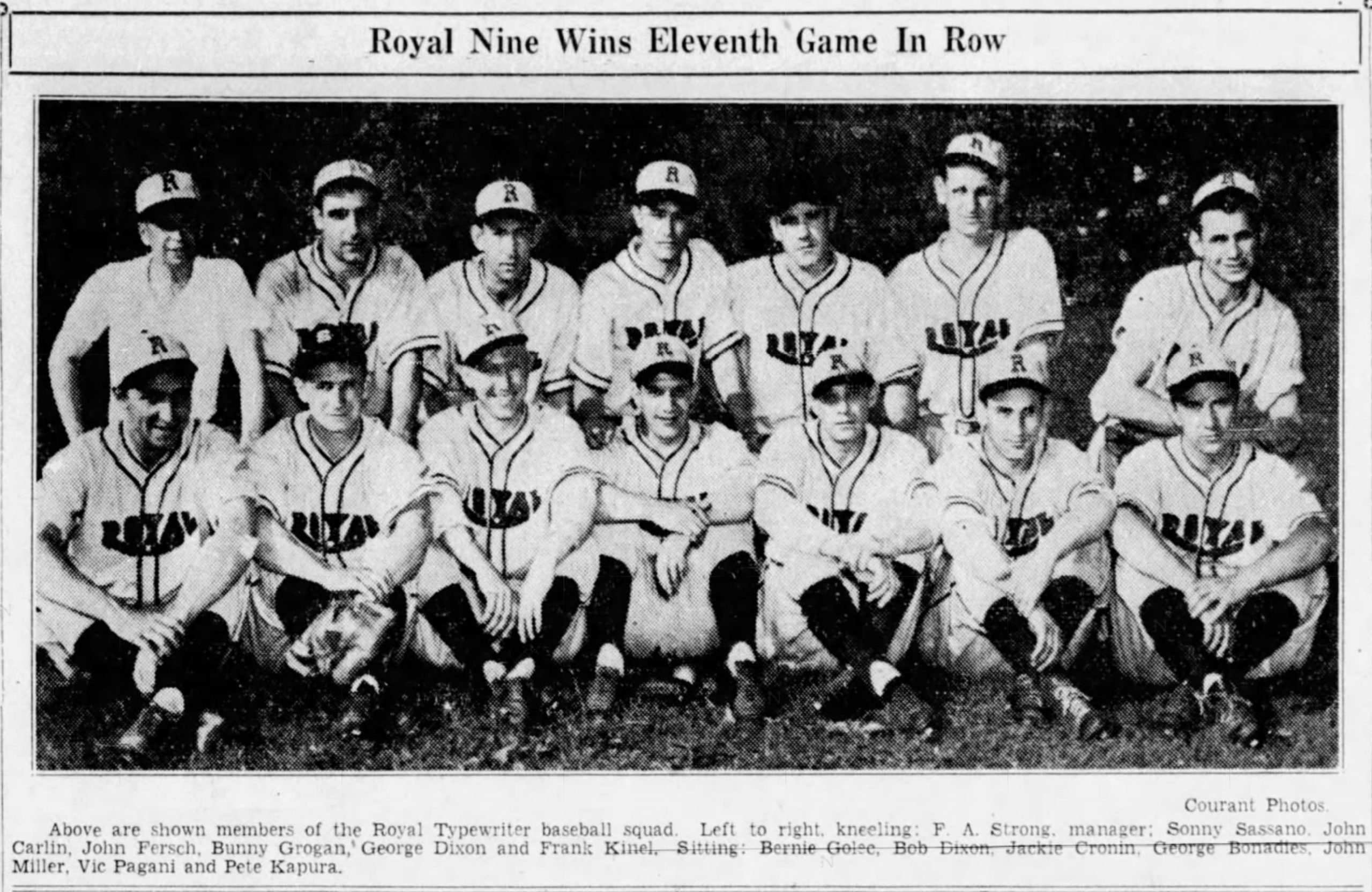
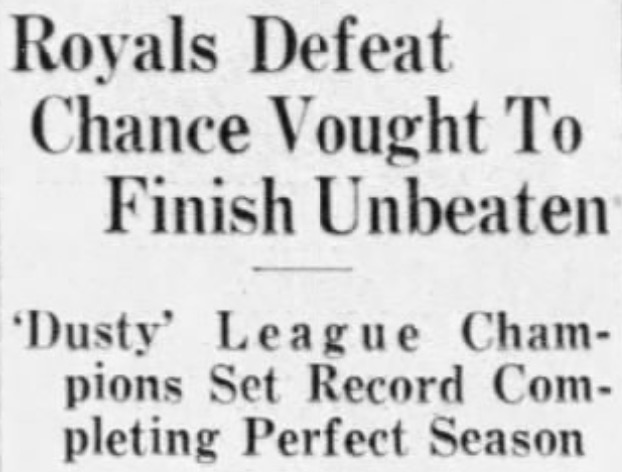
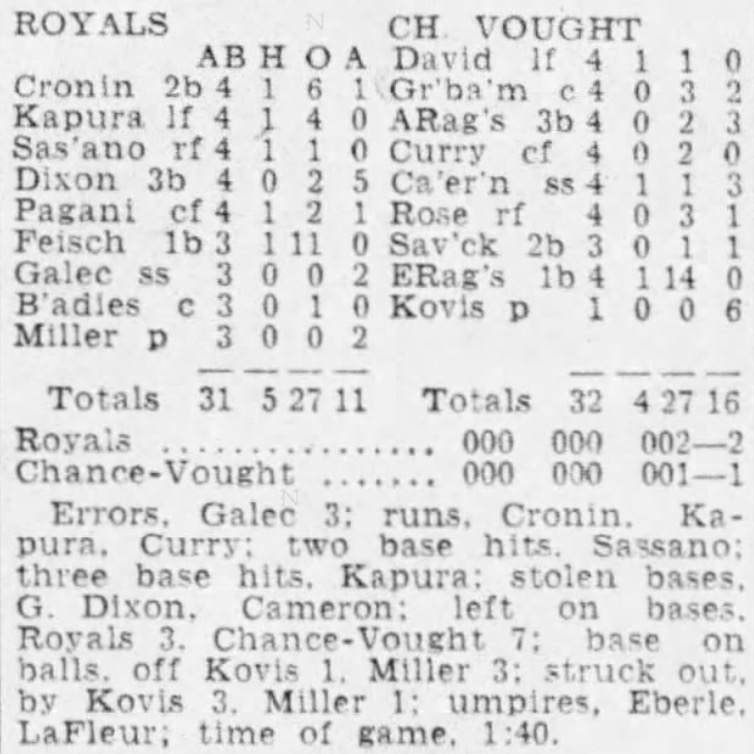
Manager Strong guided the Royals to another victorious season in 1939. After falling behind Pratt & Whitney in the Dusty League, the Royals bounced back by competing in a statewide “Connecticut Semi-Pro Baseball Championship” against the Bridgeport Springwoods. Because Bridgeport defeated Pratt & Whitney a few days earlier, the Royals secured the semi-pro state championship with a 3-2 win. A week later, the Royals faced Rhode Island’s state champion, Club Marquette of Woonsocket, but were swept three games in row.

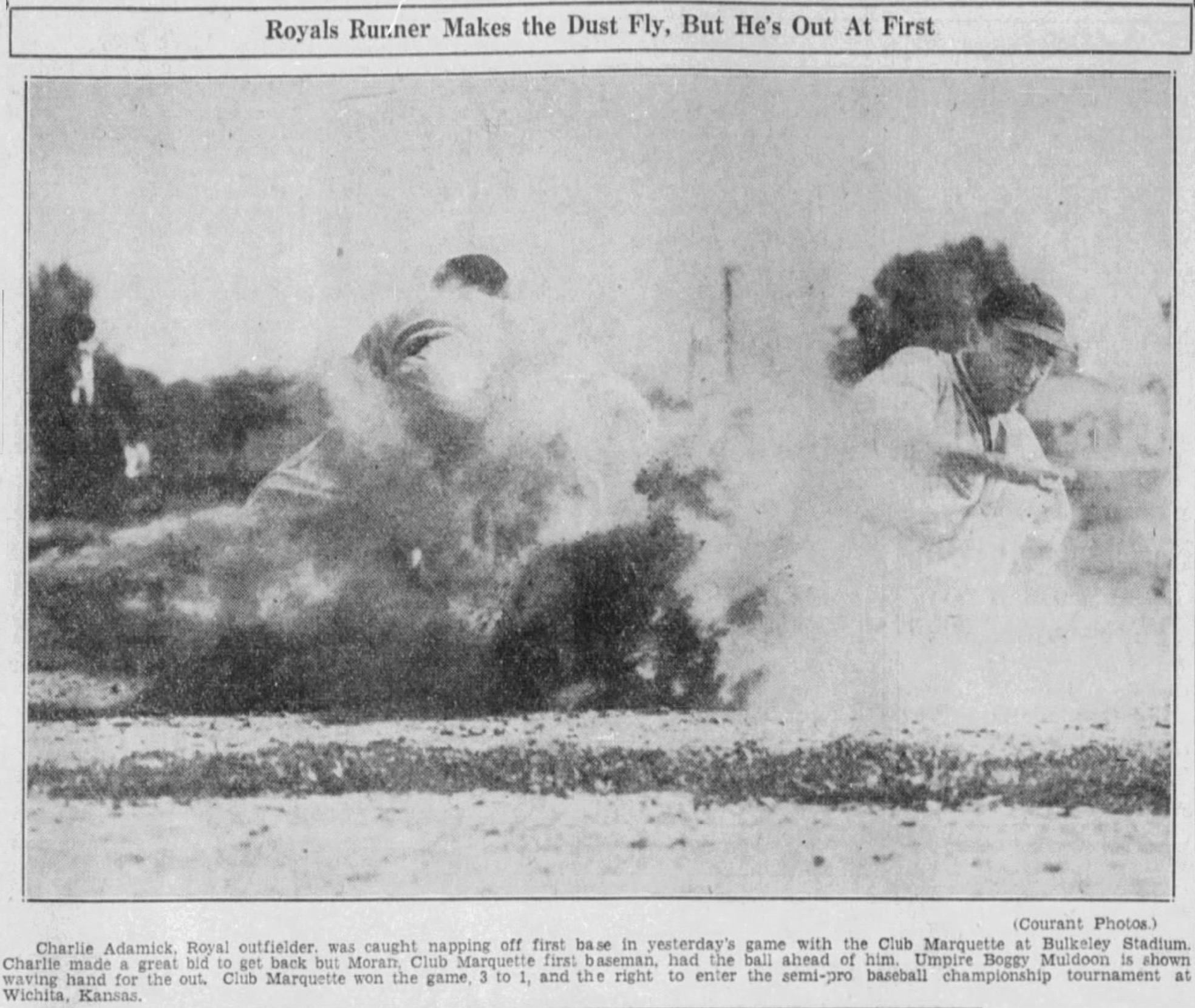
Royal Typewriter underwent immense changes during World War II and baseball took a backseat. The company suspended all commercial sales and converted all operations to manufacture supplies for the Allied cause. Women joined the workforce in droves as men enlisted for military service. More than 3,000 Royal Typewriter employees made machine guns, rifles, bullets, propellers and spare parts for airplane engines. When the war ended Royal averted a major strike by offering pay bumps and the company began to sponsor a team in the 1947 Hartford Twilight League.

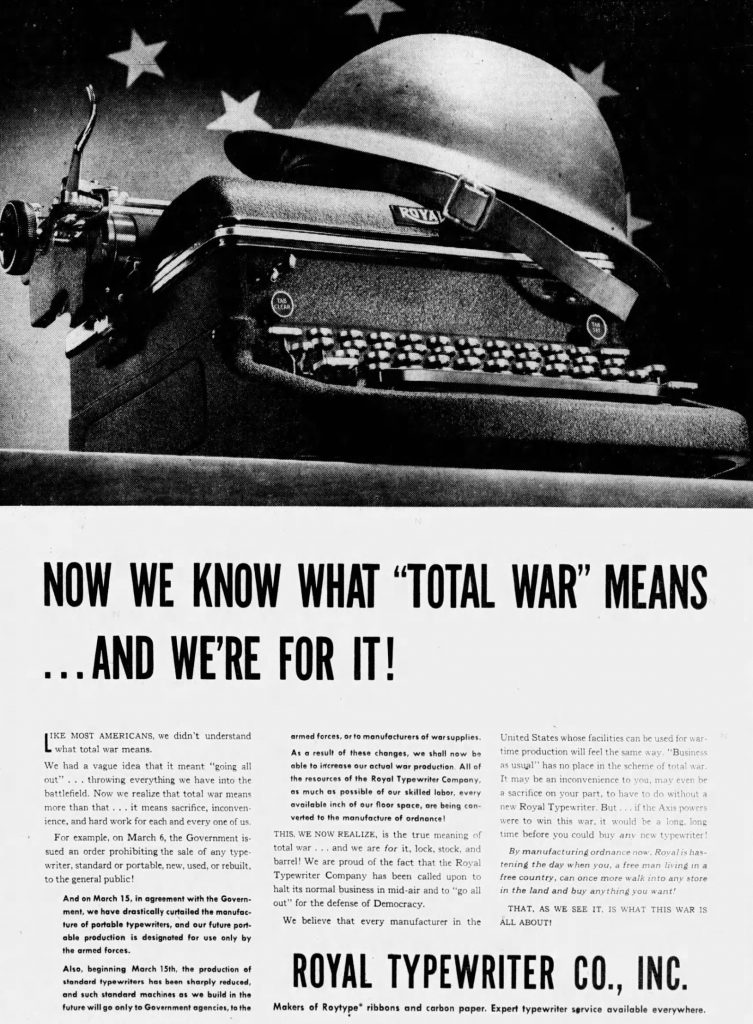
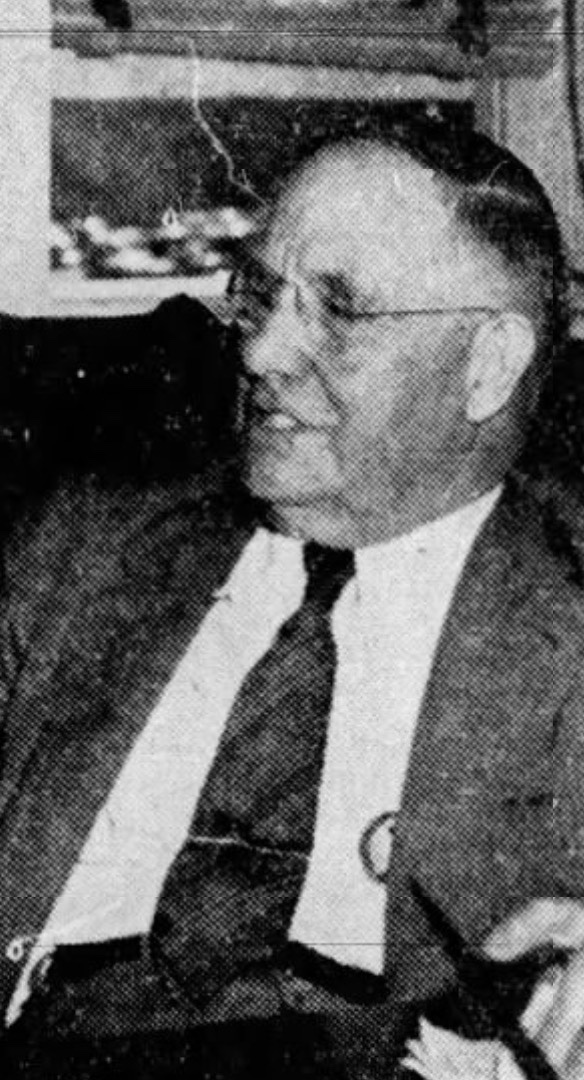

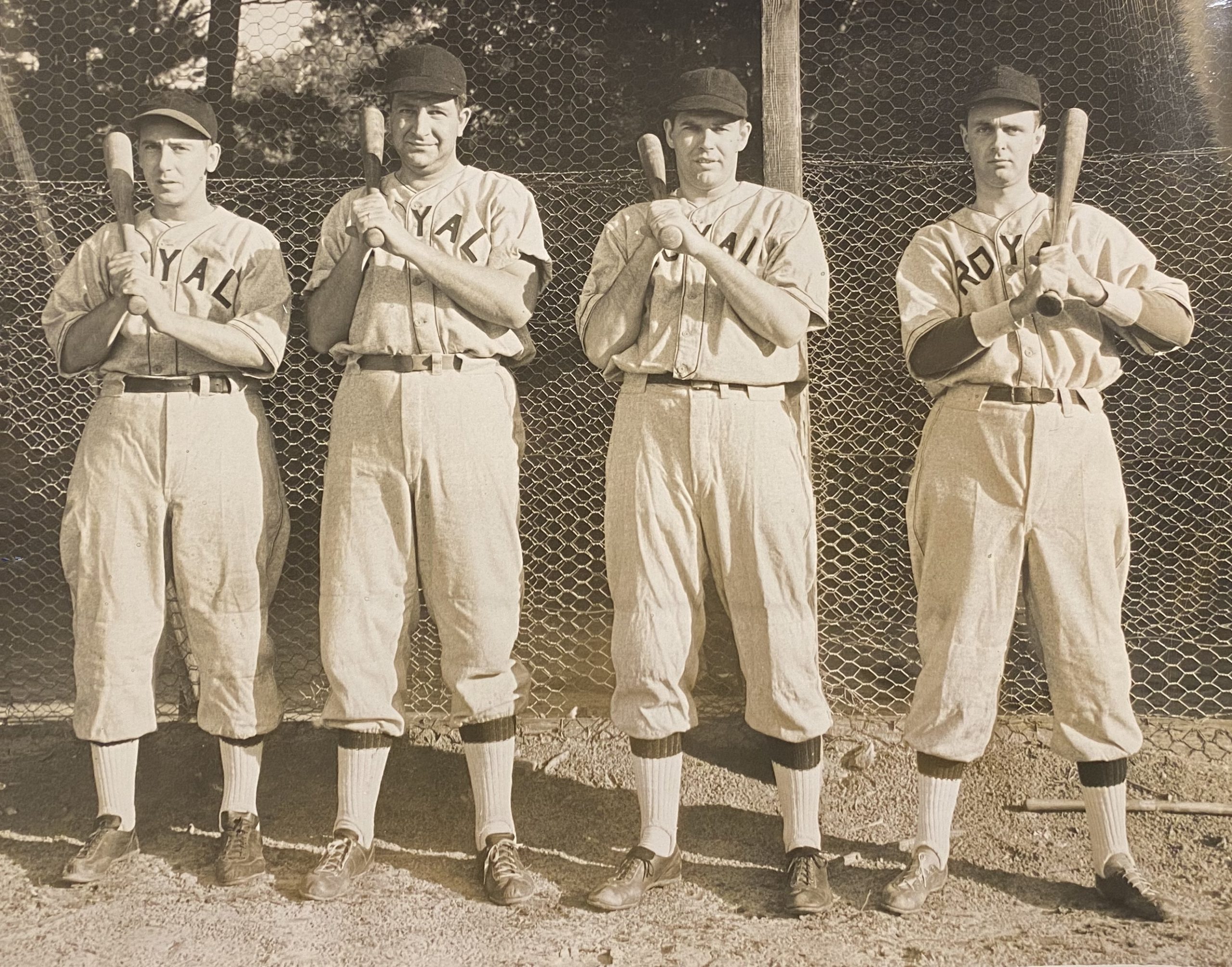
The Royal’s most significant twi-loop highlight was a benefit fundraiser called the Pete Kapura Memorial Doubleheader. Kapura, a former minor leaguer and a Royal employee, died at 35 years old at Saint Francis Hospital due to an illness. On August 11, 1947, Kapura’s wife and two children were supported by more than 3,000 attendees at Bulkeley Stadium. It was a heartfelt ending in Royal Typewriter’s long baseball history. After a mediocre twilight season in 1948, the Royals faded away, and for a short time, the company sponsored youth teams in the Jaycee-Courant League.
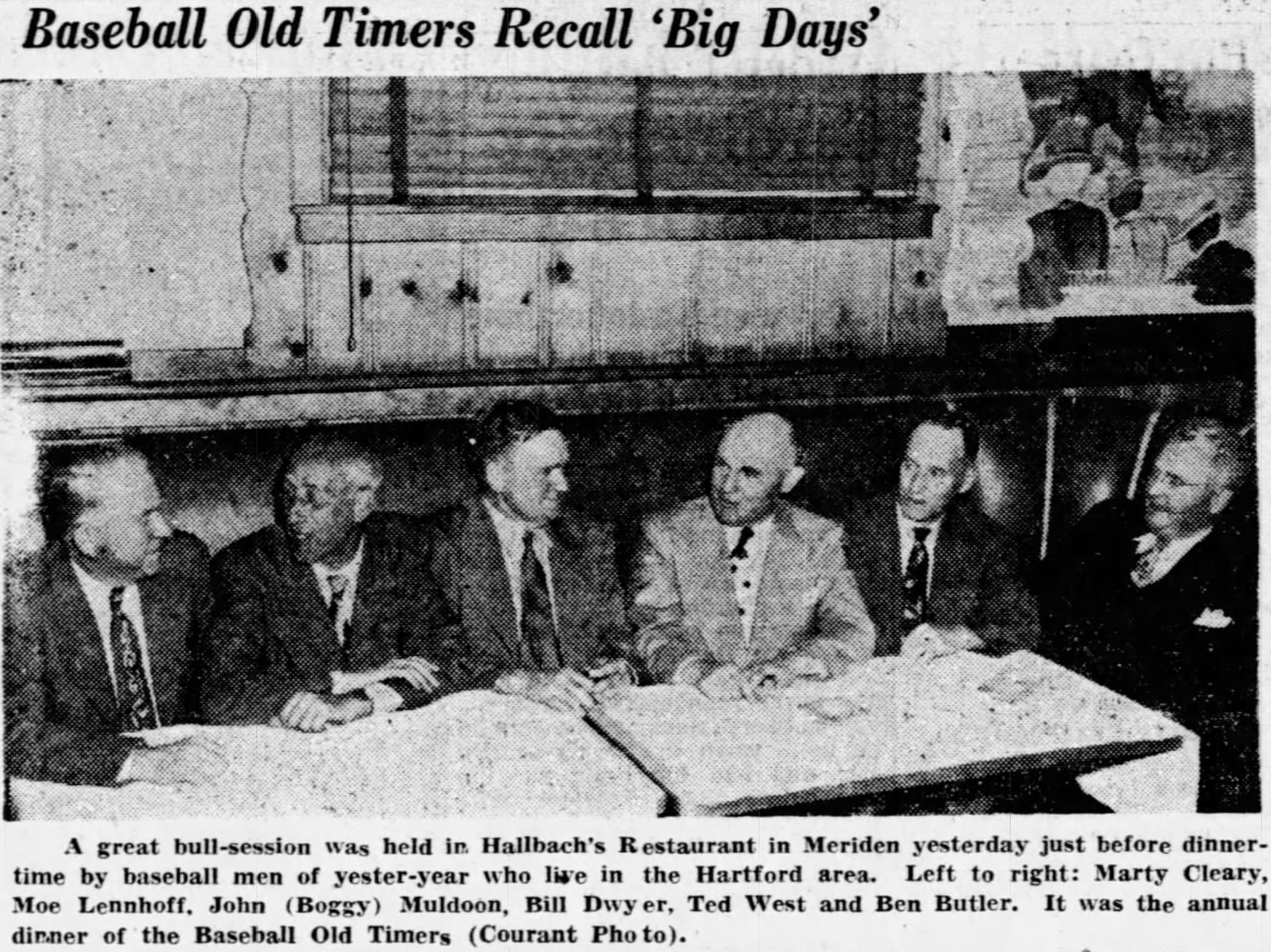
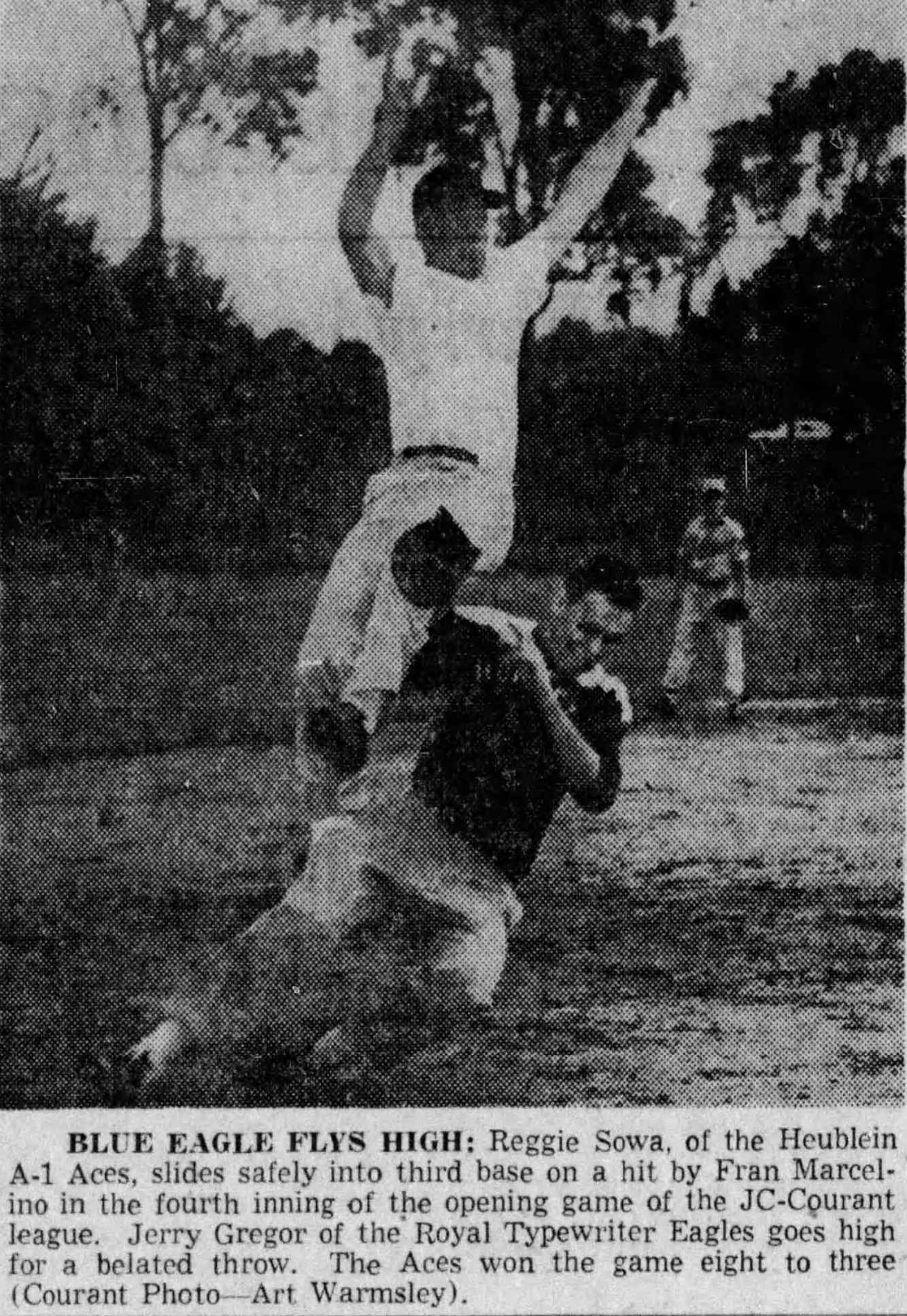

Sources













